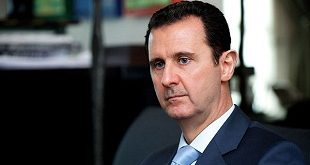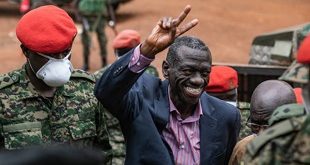It was a long journey for Moi, who was born to poor parents in a rural colonial Kenya, became orphaned at four years, and lived off the kindness of guardians. His father, Kimoi arap Chebii, died in 1928 and Moi became a Christian and adopted the name Daniel at a missionary school. In the 1940s he graduated from a teacher training college and upgraded to a teacher training college and rose quickly to become headmaster in the 1950s. By 1955 Moi had joined politics and was Member of the Legislative Council for Rift Valley which was the Kenyan parliament.
In 1960 he founded KADU to challenge KANU led by Jomo Kenyatta. After Kenya gained independence on December 12, 1963, Kenyatta convinced Moi that KADU and KANU should be merged. Kenyatta appointed him Minister for Home Affairs in 1964, and then to Vice-President in 1967.
Moi was in leadership when Uganda witnessed some of the tensest moments of its history. He was vice president when in 1976, Idi Amin announced that he was annexing parts of Kenya that, Amin said, rightfully were Ugandan territory before colonialists redrew the maps.
“God was not a fool to have given these fertile districts to Uganda,” Amin reportedly said.
Amin pointed at areas of Turkana, West Pokot, Trans-Nzoia, Bungoma, Busia, Kakamega, Central Nyanza, South Nyanza, Narok, Kisii, Kericho, Nakuru, Uasin Gishu, Elgeyo, Marakwet, Nyandarua, Nandi, Kisumu, Eldoret, Tambach, Maji Moto, Maji Mazuri, Gilgil, Nakuru, Lake Baringo and Naivasha.
This was at the height of the Amin-declared economic war that impoverished Uganda and turned it into a market of smuggled goods from Kenya which was a haven for Ugandan economic refugees and people fleeing persecution.
It was also the height of the cold war between East and West and Kenya was the bastion of the west while Amin, as the largest recipient of Soviet military aid in sub-Saharan Africa at the time, postured as the poster child of communism. Tanzania under Nyerere was staunchly socialist.
That might explain why when open war broke out between Uganda and Tanzania in 1978, Kenya was happy to watch from the sidelines. President Moi was suspicious of the war because he considered it a ploy by Nyerere to return to power Milton Obote whom Amin had deposed in a military coup in 1971.
Given a choice between Amin and Obote as president of Uganda, it appears Moi favoured Amin. At one point, historians have written, Moi wrote to Sir Stanley Fingland, the British High Commissioner in Nairobi at that time, warning that if Obote returned to power in Kampala, Kenya risked “being surrounded by left-leaning regimes”.
But Ugandans will remember Moi mainly for his chairing of the so-called Nairobi Peace Talks between then rebel leader Yoweri Museveni and then Ugandan President Gen. Tito Okello Lutwa of 1985.
Most historical records show that on July 27, 1985, an army brigade of the Ugandan army (UNLA), commanded by Brigadier Bazilio Olara-Okello, staged a coup d’état against Milton Obote’s government. At the time, Obote had been in power for five-years and a general election was expected in December. But Museveni’s NRA rebels were gaining ground in the Luwero Triangle and moving onto Kampala on many fronts. The war losses were demoralising the government forces of UNLA, and causing divisions in Obote’s government between the Acholi and Langi.
Soon after capturing power, Brig. Olara-Okello established a military council headed by Gen. Tito Okello who immediately invited all political forces and fighting factions to form a government of national unity. Many armed groups and politicians joined the Okello government but Museveni stayed away. The Nairboi Peace Talks were designed to convince Museveni to join the unity government. The talks were initially supposed to be held in Dar es Salaam since Nyerere was the undisputed power broker in Kampala with his Tanzanian Peoples Defense Forces (TPDF) influencing most of the army decisions. But Museveni rejected Nyerere’s arbitration, once again because of the Tanzania leader’s closeness to Obote. That is how Nairobi and President Moi became the mutually agreed alternative for Museveni and Okello. An agreement between them was signed in December 1985 but it was a hollow boat that could not sail as Museveni pushed on with the assault on Kampala.
In January 1986 Museveni captured power setting off another political period in which Moi would once again play a major role.
By this time President Moi was wary of military adventurism. On August 01, 1982, Senior Private Grade-I Hezekiah Ochuka of the Kenya Armed Forces had attempted to lead lower-level air force personnel into a coup against Moi. The attempt was quickly suppressed by military and police forces commanded by Chief of General Staff Mahamoud Mohamed. The main conspirators in the coup, including Ochuka were sentenced to death, but it is said Moi and other regional leaders feared the example set by the triumph of Museveni’s rag-tag army of rebels over a government army. They feared Museveni would export his adventurism, especially as there was no love lost between Museveni and Moi, Habyarimana in Rwanda, and Mubutu in DR Congo.
Within days of Museveni’s capturing power in Kampala and being sworn-in on January 29, 1986, the regional leaders summoned him to Gbadolite, Mobutu’s jungle palace of Versailles. Museveni who was accompanied by an aide, Kizza Besigye, met with Moi, Mobutu, and Habyarimana.
A historian who recorded the event said one of Museveni’s aides told him what the regional leaders wanted and Museveni gave them reassurance that he was not exporting conflict in the region.
“Uganda was the first experiment in the region; we had fought from within and taken over,” the aide reportedly said, “it was seen as a dangerous precedent by the regional leaders.”
In May 1987, Museveni signed a peace agreement with Mobutu. But it was a different story with Moi.
By 1987 a full-fledged armed conflict was brewing between Uganda and Kenya as both countries massed troops at the Busia border. The biggest flare-up occurred on December 15, 1987. Then Kenyan permanent secretary for foreign affairs, Bethuel Kiplagat told foreign media that hostilities began after 60 Ugandan troops crossed from Uganda’s border town of Busia into the Kenyan border town of the same name and opened fire.
According to an AP report of the period, Kiplagat said security police drove back the invaders, but the Ugandans returned with two truckloads of reinforcements and two tanks and started a firefight that lasted at least five hours. Several people were killed. Uganda did not officially comment on the affair.
But it probably was an attempt by Moi to beat the new rebel-leader turned Uganda president into line. Thus was born an era of suspicion. But the two leaders would later forge a cordial working relationship. In March 2019 when Moi was admitted to Kenyatta International Hospital, President Museveni visited him on March 30, 2019. And when Moi died, Museveni eulogized him. He described Moi as a strong leader who came to power at an opportune time for Kenya.
“He maintained stability in Kenya for a long time. People were worried about Kenya after the death of Kenyatta in 1978. Moi maintained stability for 20 years,” he said.
****
 The Independent Uganda: You get the Truth we Pay the Price
The Independent Uganda: You get the Truth we Pay the Price


